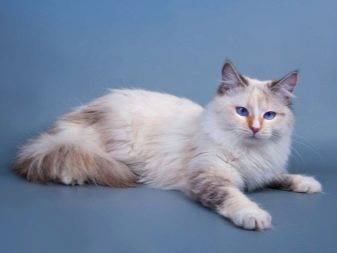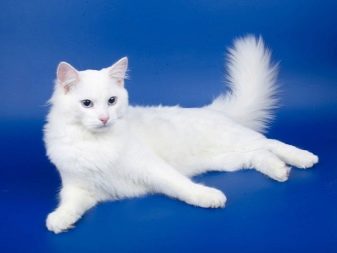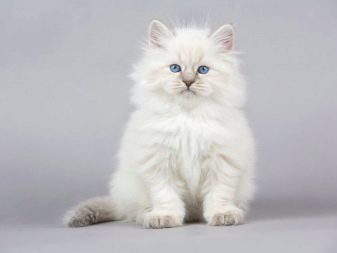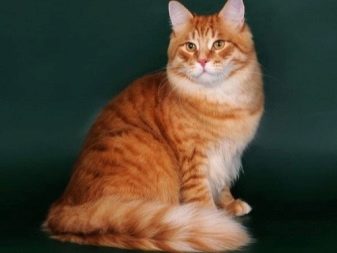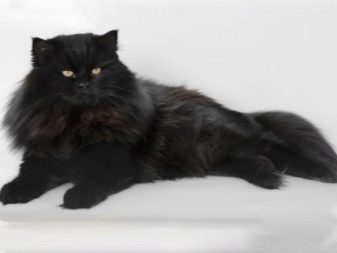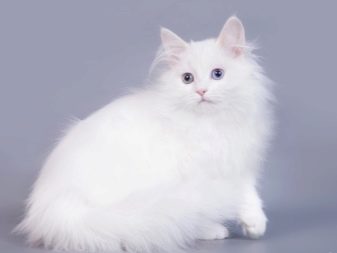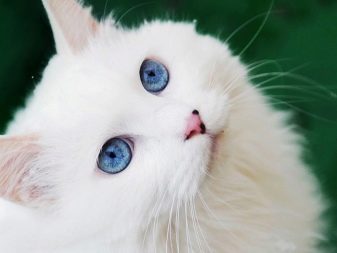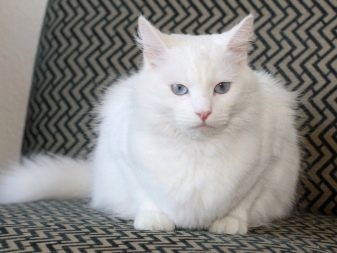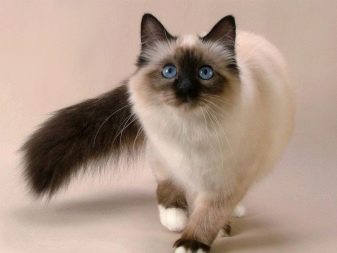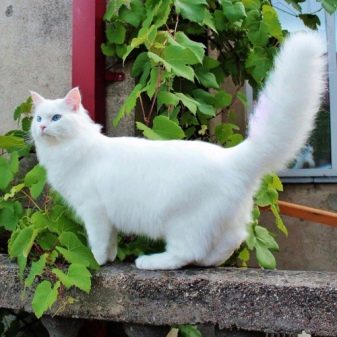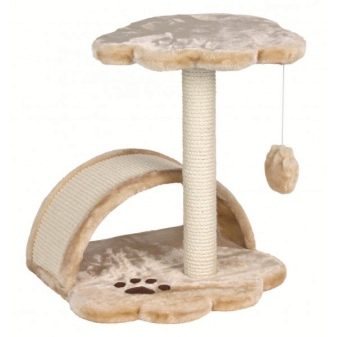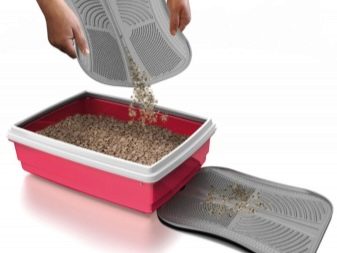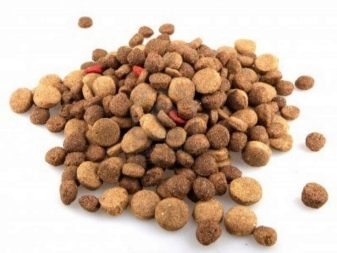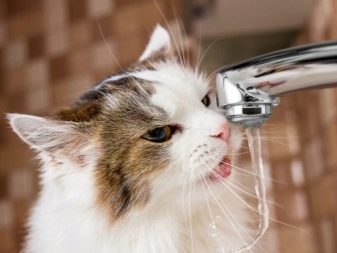Siberian cats of white color: description of the breed and peculiarities of care
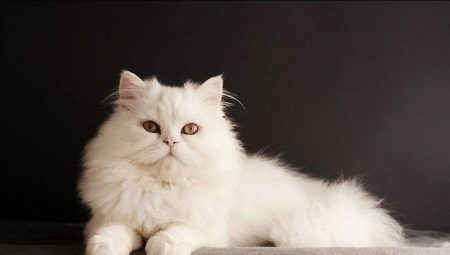
Many people want to have an animal in the house. Cats are best suited for this purpose. They are neat and get along well with people because they have been close to a person for a long time. Some do not care what breed will be a pet, but other breeders prefer only certain species. For example, Siberian cats. They are smart, beautiful, have good health.
Breed description
This type of animal received its name by the name of the area in which the breed appeared and developed. In the harsh conditions of Siberia, cats have gained thick beautiful fur. This breed has long caused interest among breeders far beyond the borders of the motherland. The Siberian cat is a semi-long-haired, has a very rich undercoat. Therefore, it looks so magnificent. In winter, a magnificent collar is formed around the neck of Siberians, and legs overgrow with pants.
Cats are classified as large breeds. They are distinguished by short paws, wide pads on the feet, a muscular body, and a bushy tail. No need to pay attention to the fact that these animals look at the background of other breeds more than massively. Powerful physique does not prevent them from being active and graceful. In addition, a large amount of wool attached to them. Therefore, they look presentable.
There are certain breed standards.
- In withers adult individuals reach: 30 cm - cats, 40 cm - cats.
- Their weight can vary from 6 to 10 kg.
- Animals live about 15–20 years.
- They have a serious and delicate nature. They are devoted to their master and, like a toy terrier, they always choose one person whom they love and obey. From other family members will also take care of, play with children. They can stand up for loved ones, despite the deadly threat.
- Siberians are distinguished by high intelligence. They are well trained, but are very independent. Therefore, the cat must itself want to do something. This breed of cats is not very sociable. They are unobtrusive. These qualities appear when strangers appear in the house.
- Although the coat is very thick, it is hypoallergenic. The coat is waterproof.
- There are various colors, but there are basic ones: cream, red, black, white.
The animals of white color with blue eyes stand out against the background of their relatives. Their color was formed by combining different genes: the recessive allele of the Angora albino and the allele of the superdominant white W (White). And when mating from an animal with an animal of another color, we may well get completely white kittens if they inherit the W gene.
Kittens can have blue, yellow eyes or be with multi-colored eyes (one is yellow, the other is blue).
Often, white cats with blue eyes are born deaf. Future owners should take into account this fact: such an animal will not be allowed to the exhibition. The usual requirements at exhibitions: any animal that has a single color, should not be with additional spots. The same requirements apply to completely white Siberians.
Warning: white kittens at birth may have small specks that disappear as they grow into an animal.
Breeders should be aware that in order to get a full color, it is necessary to hybridize traditional color cats with color-point colors.
Care features
It must be remembered that any animal requires attention and care. Young kittens are very active, so your pet at the first opportunity begins to run, jump and play wherever it wants. So that he does not crush your home, try to organize small walks, preferably in the fresh air. It is necessary to do this as often as possible: the cat must burn its energy somewhere and realize the hunting instincts.
The most serious problem is thick wool. It constantly needs to be combed out. To do this, there are special scallops that are sold in pet stores. In order for an adult animal not to resist, when you rub the body with a comb, it must be taught this procedure from an early age. A kitten needs to be combed every day for 4–5 minutes. Then this procedure will eventually become a habit and will only be a joy. By the way, the wool and down of cats warm very well.
Use them to treat joint diseases.
Do not forget that the kitten should be treated like a child. Teach him to behave in an appropriate manner and teach hygiene. Clean your ears regularly with cotton buds moistened with a special solution. Claws you can not cut yourself. Seek help from a vet. However, this procedure is not needed if you teach Siberian to claw. And then he will adjust the length of the claws independently.
Bathing is necessary, but it should be done only 1-2 times in six months. Keep in mind that cats can independently monitor their hygiene. Siberians almost do not get sick. How to make preventive measures for the removal of various parasites, you will prompt the vet.
From the first days in the house, teach the kitten to the tray and the bowl. These essentials should be given a special space. And also your pet should have a place of rest. Do not let him sleep in your bed. Animals get used to such places very quickly, and it will be difficult to wean them.
To feed the cat you need protein food. It should be two-thirds of meat products. Pieces (about 100 g) lean lamb, rabbit or beef each time pour boiling water and chop before serving. Fish should be fed only in boiled form, as there are many parasites.
If you decide to try to treat a cat with offal, such as liver, then they also need to boil. Teach your pet to greens, vegetables and dairy products. Combine and alternate different types of food in the formation of a diet.
Do not feed cats with cheap feed.
If you decide to add high-quality food to your pet's diet, then buy a small pack first and see if the animal will eat it, and also look at the body's reaction. You should know that from poor-quality cat food can fall wool.
If you give your pet dry food, be sure to place a bowl with clean water next to it. Cats can not do without water. Specialized food is better to give in the morning when you do not have enough time, and in the evening be sure to indulge your pet with natural food.
Video about Siberian cats, see below.
